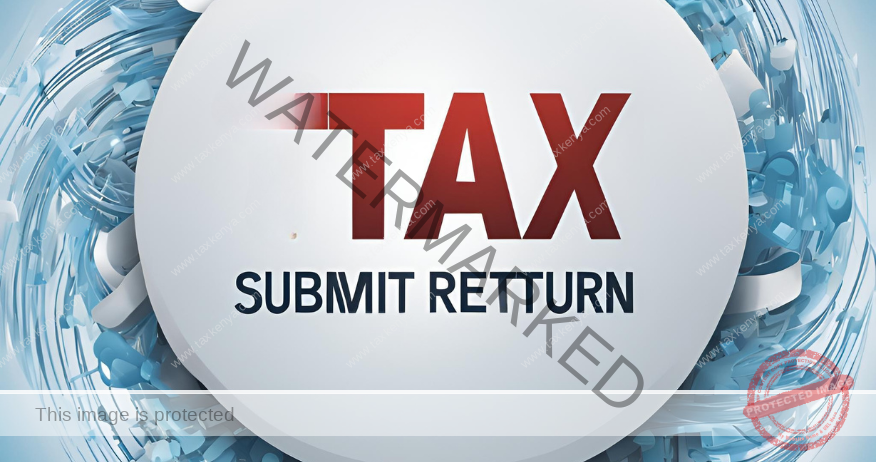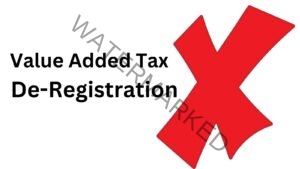All taxpayers in this country are expected to file tax returns for taxes reported monthly (e.g., PAYE, VAT, etc.) and annually (e.g., income tax). Failure to file tax returns attracts fines, penalties, and tax interest.
Affiliate Disclosure: This post may contain affiliate links – we may receive a small commission if you purchase through links, at no extra cost to you. Read HERE.
Filing tax returns used to be a complicated and time-consuming process in this country. Taxpayers had to visit Kenya Revenue Authority (KRA) offices, fill out paper forms, and manually submit their tax return documents.
However, with the advancement of technology globally, the Kenya government embraced technology in tax reforms and introduced eFile through iTax. This is an electronic tax filing system that allows individuals and non-individual taxpayers to submit their tax returns. This is done online through the KRA iTax portal.
This article will explain eFile and why it is essential and provide a detailed step-by-step guide on how to eFile income tax returns in Kenya. Whether you are an employee, business owner, or self-employed, this article will help you understand the eFiling process to remain compliant with Kenya’s tax laws.
What is eFile?
eFile, short for electronic filing, is the process of submitting tax returns online instead of using physical paper forms. The KRA provides an online platform popularly known as iTax, where taxpayers can log in, fill out tax return forms, and submit them digitally.
Why is eFile Important?
Though there was resistance to electronic filing initially, the system was accepted probably after taxpayers realised they had no other option. Like every system, electronic filing has many benefits. The following are some of those benefits.
1. Saves Time and Effort—Taxpayers no longer have to visit KRA offices physically, making the process quick and convenient.
2. Reduces Errors – The system automatically calculates taxable income and tax owed, reducing human errors.
3. Ensures Security – Tax records and documents are stored safely in a digital format, preventing loss or damage.
4. Faster Processing—Tax compliance certificates (TCCs) are processed faster, and tax refund processing is being streamlined.
5. Eco-Friendly – eFile eliminates the need for paper, and this contributes to environmental conservation.
The iTax system ensures that Kenyan taxpayers can easily access tax services from the comfort of their homes or offices.
Who Needs to eFile Taxes in Kenya?
Every taxpayer in Kenya with a KRA PIN is subject to income tax requirements and must file tax returns annually. The taxpayers who are required to file tax returns using eFile include the following:
1. Salaried Employees – Individuals who receive a salary and whose employer deducts Pay As You Earn (PAYE).
2. Self-Employed Individuals – Business owners, freelancers, and consultants who must declare their income and pay tax.
3. Companies and Partnerships – Businesses are required to submit annual corporate tax returns and pay tax.
4. Turnover Taxpayers – Small businesses under the Turnover Tax (TOT) system must eFile their tax returns.
5. Nil Filers – Individuals who do not have taxable income are still required to submit Nil Returns.
How to eFile Income Tax Returns in Kenya
The process of eFiling tax returns in Kenya is simple if you follow the following specific steps provided below:
Step 1: Register on the KRA iTax Portal
To access eFile services, you must be registered on the KRA iTax portal.
1. Visit kra.go.ke
2. Click on “New PIN Registration” if you already have a KRA PIN.
3. Provide your National ID number, email address (working), and current phone number.
4. Create a password and log in to the iTax system.
Once registered, you can proceed to eFile your income tax returns.
Step 2: Gather Required Documents
Before you begin the eFile process, ensure you have the necessary records and documents:
a. KRA PIN – Your unique tax identification number.
b. P9 Form—This is provided by your employer and shows your total earnings and tax deductions for the specific income year.
c. Bank Statements – The statements will help show your income if you are self-employed.
d. Business Records – For businesses, you need to have the financial statements.
e. Mortgage Interest Statements – If you have a mortgage, this will help you reduce taxable income.
f. Insurance documents – These will help reduce your tax.
Step 3: Log in to iTax and Select the Return Type
1. Visit kra.go.ke and log in using your KRA PIN and password.
2. Click on “Returns,” then select “File Return”.
3. Choose the type of tax return you need to file:
- Individual Income Tax Return – For employees.
- Company Tax Return – For businesses.
- Turnover Tax Return – For small businesses.
- Nil Return – If you have no taxable income.
Step 4: Fill in the Tax Return Form
Once you have selected your return type, follow these steps:
1. Select the Tax Period – Choose the year you are filing for.
2. Enter Personal Details – Your name, KRA PIN, and employer details.
3. Report Your Income – Use information from your P9 form or bank statements.
4. Declare Tax Reliefs – Include insurance relief, mortgage interest deductions, and pension contributions.
5. Confirm Auto-Calculated Tax – The system will automatically calculate the tax owed or any refund due.
Ensure that all the information you have entered in the tax return is accurate to avoid fines, penalties, and tax interest.
Step 5: Submit Your eFiled Tax Return
After filing the tax return, don’t upload it immediately without doing the following:
1. Review all the details you have put on the tax return carefully to ensure they are correct.
2. Once you are sure the details are correct, click “Submit” and wait for the confirmation message.
3. Download and save the eFile Acknowledgment Receipt as proof of submission.
Step 6: Pay Tax
If the system shows that you owe taxes, you must pay before the deadline to avoid penalties. Follow the following steps.
1. Generate a Payment Slip from iTax.
2. You can pay using one of the available methods:
- M-Pesa Paybill – Enter the KRA Paybill number and your KRA PIN as the account number.
- Bank Deposit – Pay at any authorized KRA bank partner.
- Credit/Debit Card – Some banks allow tax payments via card.
Step 7: Tax Compliance Certificate Application
After successfully eFiling and paying any taxes due, your tax file will be clear. If you need a tax compliance certificate (TCC), you can apply. The following are the steps you will need to take:
1. Log in to iTax and go to the TCC application section.
2. Fill out the application form and submit it.
3. If approved, you will receive your TCC via email.
4. If it is not approved, you will be informed of the reasons. You need to address the issues and resubmit the application.
A TCC is essential and required in many places, such as job applications (some), government tenders, utilities applications (power), opening bank accounts, and loan applications.
Common Mistakes to Avoid When eFiling
Many taxpayers make errors when eFiling. Here are some of the mistakes to watch out for:
1. Entering the Wrong KRA PIN – Always verify your details before starting the eFiling process.
2. Skipping Tax Reliefs – Failing to claim deductions can lead to overpaying taxes.
3. Failing to Submit – Ensure you get a confirmation receipt.
4. Late Filing—The deadline for eFiling tax returns is 30 June every year. If you are not ready, inform the tax commissioner 30 days early.
Benefits of eFiling Taxes
Every system has its benefits. Equally, there are many benefits of eFiling taxes in the country. The following are some of those benefits:
1. Fast and Efficient – eFile takes only a few minutes.
2. Reduced Risk of Penalties – Filing tax returns on time will help you avoid unnecessary fines, penalties, and interest.
3. Better Tax Record and Documents Management – All submissions for tax purposes are stored securely and electronically.
4. Convenience – There is no need to visit KRA offices personally; everything is done online.
5. Eco-Friendly – eFiling saves paper and reduces waste, making it eco-friendly.
Other Related Posts
Final Thoughts
eFile is Kenya’s easiest and most reliable way to submit monthly and annual tax returns. By following the steps outlined in this article, individual and non-individual taxpayers can quickly file their returns, avoid fines, penalties, and interest, and enjoy compliance benefits.
Start your eFile process today by logging into kra.go.ke and submitting your income tax return before the deadline!




